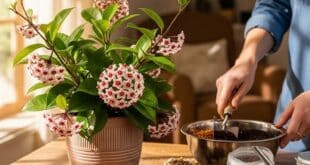Understanding Why Your Hoya Isn’t Blooming
Are you staring at a beautiful, leafy Hoya vine that grows and grows, yet stubbornly refuses to produce its iconic, star-shaped flowers? It’s a common frustration that brings many plant owners to ask the same question: how to get a hoya plant to bloom? You see the stunning pictures online, you know the fragrant potential hiding in your plant, but your own Hoya gives you nothing but leaves.
You’re not alone, and the good news is, your plant isn’t broken.
Getting a Hoya (or Wax Plant) to bloom isn’t about a single magic trick. It’s about understanding how the plant thinks and providing a specific set of conditions that signal it’s time to shift from growing to flowering. As a seasoned plant enthusiast, I’m here to demystify the process. Forget vague advice. These are the seven crucial, experience-backed secrets to finally get the blooms you’ve been waiting for.
1. Light: It’s Not Just a Suggestion, It’s the Main Event
This is the primary reason why most Hoyas struggle to produce blooms. While Hoyas can survive in medium light, they will rarely, if ever, flower there. To produce blooms, they need hours of bright, indirect sunlight.
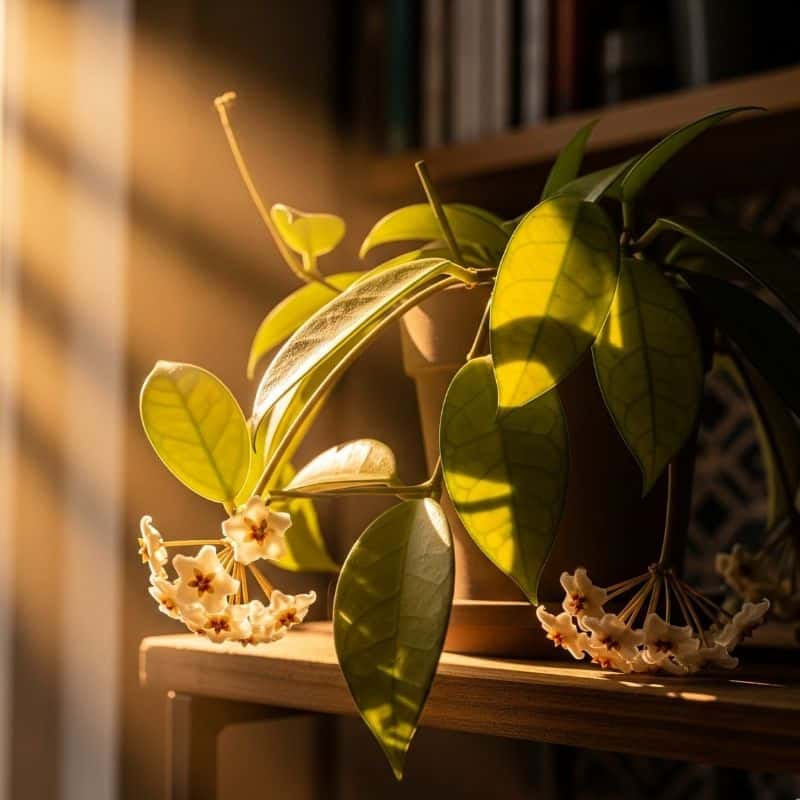
- The Science Behind It: Photosynthesis creates energy. Flowering is an energy-intensive process. Insufficient light means the plant only has enough energy for basic survival and leaf production, with nothing left over for the luxury of making flowers.
- What to Do:
- Find the Sweet Spot: An east-facing window is the gold standard, providing gentle morning sun that isn’t harsh enough to scorch the leaves. A spot a few feet back from a south or west-facing window, perhaps filtered by a sheer curtain, also works perfectly.
- Read the Leaves: If your Hoya’s leaves are a deep, dark green with long spaces between them (a “leggy” appearance), it’s screaming for more light. A healthy, happy Hoya getting enough light for blooms will often have a lighter, more vibrant green color, and some species may even develop a reddish, sun-stressed tinge on the leaf edges.
2. The “Happy Stress” of a Snug Pot
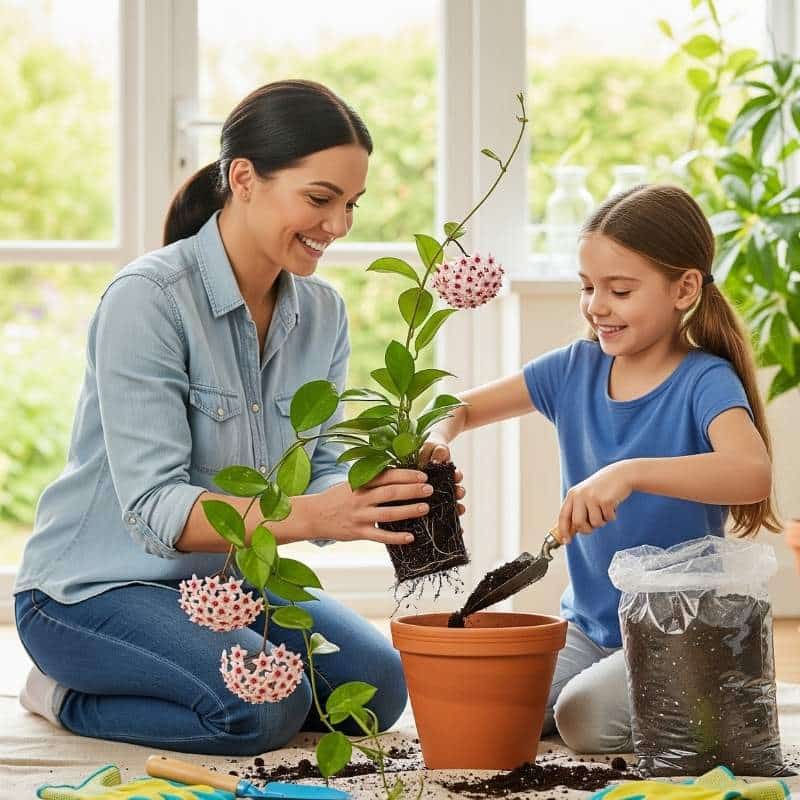
Here’s where Hoya care becomes counter-intuitive. In our desire to be good plant parents, we often think a bigger pot means a happier plant. For Hoyas, the opposite is often true. Understanding this principle is one of the most overlooked factors in how to get a hoya plant to bloom. They flower best when they are slightly pot-bound (or root-bound).
- The Science Behind It: When a Hoya’s roots fill its pot, the plant receives a biological signal: “I can’t expand my foundation anymore, so I should focus my energy on reproduction instead.” This triggers a shift from vegetative (root and leaf) growth to flowering. Constantly repotting into a larger home tells the plant to keep growing roots, delaying blooms for years.
- What to Do:
- Resist the Urge to Repot: Only repot your Hoya every 2-3 years, or when it’s so root-bound that water runs straight through without soaking in.
- Size Up Minimally: When you do repot, choose a new pot that is only 1-2 inches (2-5 cm) wider in diameter than the previous one. This provides just enough fresh soil without giving the roots too much room to roam.
3. Watering: Master the Art of “Tough Love”
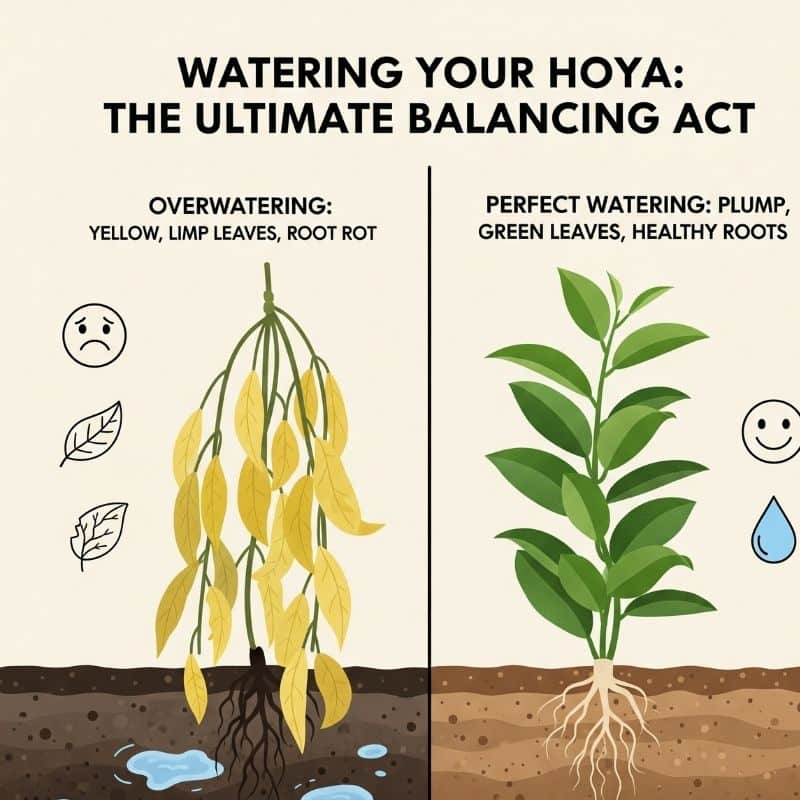
Hoyas are semi-succulent plants, capable of storing water in their thick, waxy leaves. The greatest danger to their health—and their blooming potential—is overwatering and the resulting root rot.
- The Science Behind It: Consistently soggy soil suffocates the roots, leading to rot and stressing the plant in a negative way that prevents flowering. A slight period of dryness, especially in the cooler months, can act as a natural trigger that mimics a dry season, often encouraging a burst of blooms in the spring.
- What to Do:
- Use the Finger Test: Never water on a schedule. Before watering, stick your finger 2 inches (5 cm) deep into the soil. If it feels dry, it’s time to water thoroughly. If you detect any moisture, give it a few more days before checking again.
- Implement a Winter Drought: In the fall and winter months, drastically decrease how often you water. This dormant period is crucial for the plant to rest and gather energy for a spectacular spring bloom show.
4. Feed for Flowers, Not Just Foliage
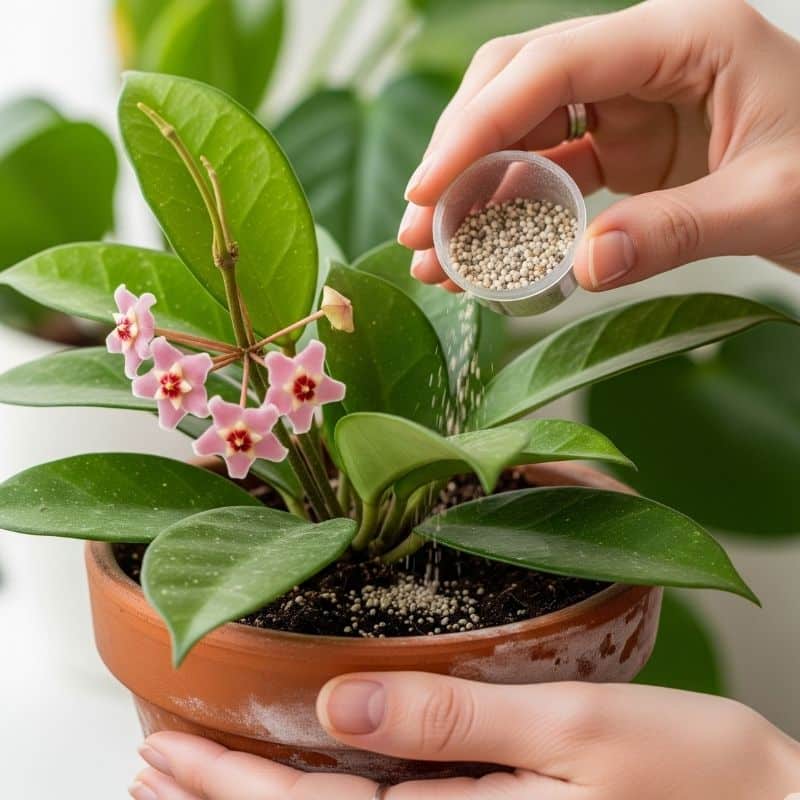
Fertilizer provides the essential nutrients for blooming, but the type of fertilizer is critical. A general-purpose houseplant food is often high in Nitrogen (N), which encourages lush, green leaf growth—often at the expense of flowers.
- The Science Behind It: The N-P-K ratio on fertilizer represents Nitrogen-Phosphorus-Potassium. Nitrogen (N) fuels leaf growth, while Phosphorus (P) is the key macronutrient for flower development.
- What to Do:
- Switch Your Formula: In the spring and summer growing season, switch to a fertilizer with a higher middle number (Phosphorus). This is frequently advertised as an “orchid fertilizer” or “bloom enhancer.”
- Don’t Overdo It: Feed your Hoya only during the active growing season. Using a half-strength dilution every 3-4 weeks is sufficient. Over-fertilizing may damage the roots and completely halt the plant’s growth.
5. Protect the Peduncles: The Secret to Repeat Blooms
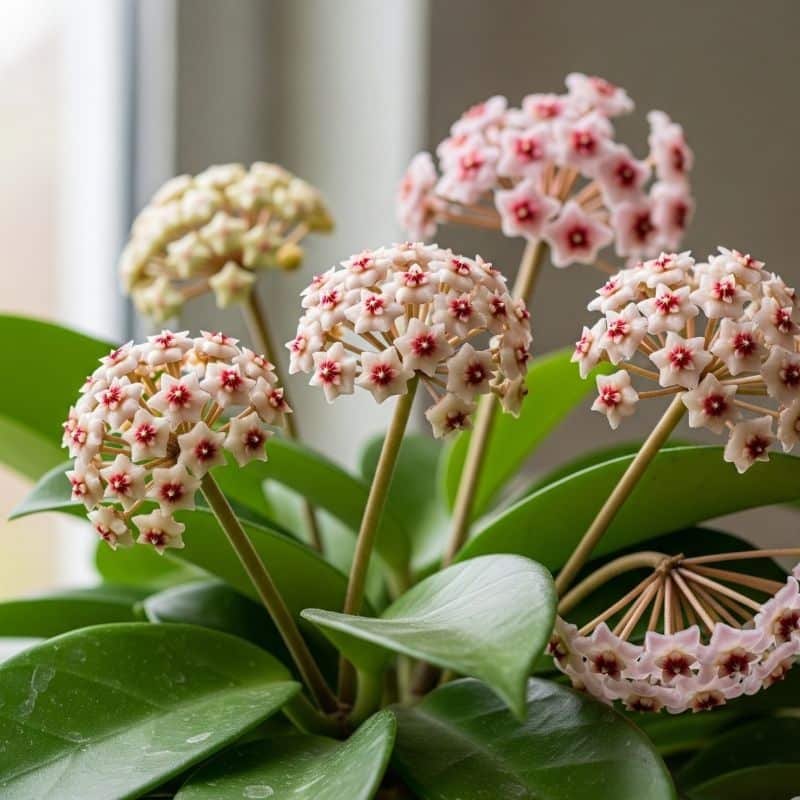
This is the golden rule that separates novice Hoya owners from experts. When your Hoya finishes blooming, you’ll see a small, woody spur or stem where the flowers were attached. This is called a peduncle.
- The Science Behind It: Unlike many other plants, Hoyas re-bloom from the very same peduncle, year after year. Think of it as a permanent flower factory. If you cut it off, you force the plant to expend a massive amount of energy to grow a new one from scratch, setting you back a season or more.
- What to Do:
- Never Cut the Peduncles! Once the flowers fade and fall off naturally, leave that little stem alone. It may look like a dead twig, but it’s the key to future flowers.
6. Acknowledge Age and Maturity
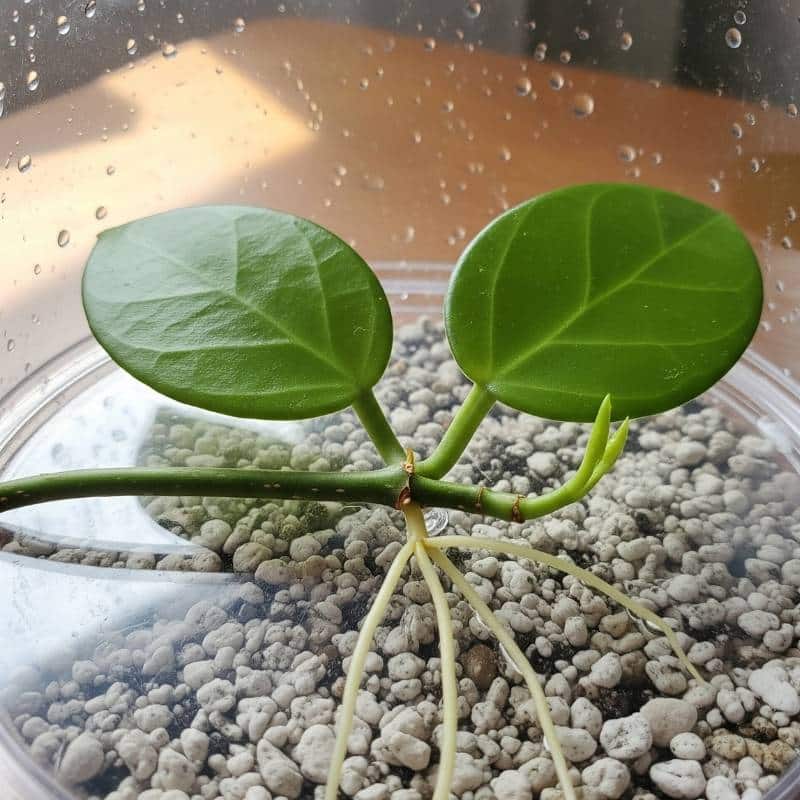
Patience is a virtue, especially with Hoyas. A small cutting you recently potted is a baby. It needs time to establish a robust root system and mature before it has the energy reserves to flower.
- Expert Insight: Depending on the Hoya species and its growing conditions, it can take anywhere from 2 to 5 years for a new plant to produce its first bloom. Attempting to make a young plant bloom is an exercise in futility. Focus on providing excellent care (especially light), and it will reward you when it’s ready.
7. Keep It Stable: Hoyas Are Creatures of Habit
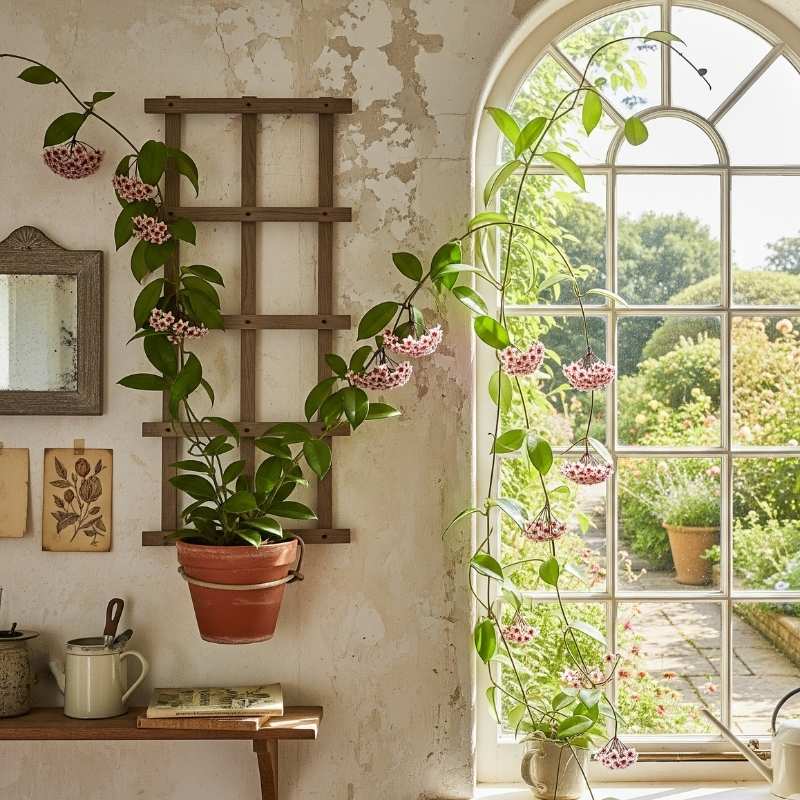
Once you find a spot where your Hoya is thriving, leave it there. They are sensitive to changes in their environment, and moving them around can cause stress that halts bloom production.
- Avoid Bud Blast: This is especially critical if you see tiny buds beginning to form. Moving the plant, a sudden temperature drop, or a change in watering at this stage can cause the plant to abort its buds before they open—a frustrating phenomenon known as “bud blast.”
Conclusion: The Blooming Point

So, the ultimate answer to how to get a hoya plant to bloom isn’t a single secret ingredient, but rather a holistic approach. It’s about creating an environment of stability, providing abundant light, and applying the right kind of “stress” through careful watering and snug potting. By patiently applying these principles, you’re not just keeping your plant alive; you’re speaking its language and giving it everything it needs to finally deliver that spectacular floral reward. Finally the tips mentioned above apply to the care of all Hoya varieties.



